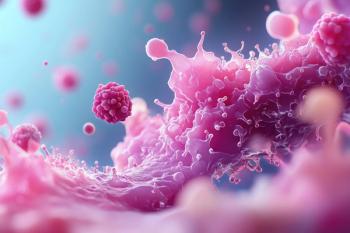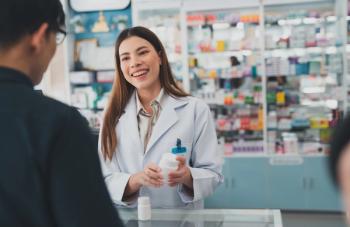
New Findings on C Difficile Physiology ‘Flips the Field of Microbiology on its Head,’ According to Investigator
The bacteria were shown to contain a membrane-bound organelle structure that is like those found in eukaryotic cells.
According to new research, iron storage “spheres” inside of the Clostridioides difficile (C difficile) bacterium might lead to disease-causing C difficile infection (CDI), according to research conducted at Vanderbilt University and published in Nature. In animal models, the membrane-bound structures—called ferrosomes—were responsible for disease, so ferrosomes could serve as a significant therapeutic target.
"Anytime we find new factors involved in host-pathogen interactions and show that they're important for infection, that opens entirely new opportunities to make classes of antibacterial drugs that have not existed before,” said Eric Skaar, PhD, MPH, Ernest W. Goodpasture professor of pathology and director of the Vanderbilt Institute for Infection, Immunology, and Inflammation, in a press release. Skaar added that increasing instances of antimicrobial resistance make it important to find antimicrobial therapies that work.
According to the CDC, C difficile might cause more than 500,000 infections every year, investigators reported. C difficile is the primary cause of hospital-acquired infection, and it can cause diarrhea and colitis. It is estimated that more than 29,000 people will die from CDI.
Prior research identified some environmental bacteria which produce ferrosomes to store iron. Investigators of the current study wanted to understand if C difficile bacteria also use ferrasomes to store iron, which can allow the bacteria to grow and survive; most living things use iron for this purpose, according to the investigators.
The Vanderbilt research team used the STEM-EDS method to locate iron in the C difficile bacterium, Skaar explained in the press release. Further studies led by Skaar and co-first author Hualiang Pi, PhD, showed that the fezA and fezB genes caused ferrosome formation—these ferrosomes are what cause disease in animal models. Ferrosomes were also linked to inflammatory bowel disease because they prevent the host from starving the bacterium.
Investigators also implement cryogenic electron microscopy (cryo-EM) and cryo-tomography technology to show that ferrosomes are membrane-bound, which is what characterizes an organelle.
"The emerging idea that bacteria do compartmentalize biochemical processes in a way similar to eukaryotic cells really flips the field of microbiology on its head," Skaar said in the press release.
The investigators will gear future research toward understanding ferrosome formation, production, and the role of the structure, according to the press release. Skaar added that he would like to study bacterial organelles, and that the entire team is interested in identifying subcellular compartments in bacteria; these could help to inform investigators about the bacteria’s physiologic processes.
Ultimately, the data "establish(es) ferrosome formation and all the factors involved in ferrosome formation as potential targets for new antibacterial drugs against an important infectious disease," Skaar said in the press release.
Reference
Novel C. diff structures are required for infection, offer new therapeutic targets. Vanderbilt University Medical Center. November 15, 2023. Accessed on December 6, 2023. https://www.sciencedaily.com/releases/2023/11/231115113402.htm C. diff (Clostridioides difficile)
Newsletter
Stay informed on drug updates, treatment guidelines, and pharmacy practice trends—subscribe to Pharmacy Times for weekly clinical insights.


















































































































































































































